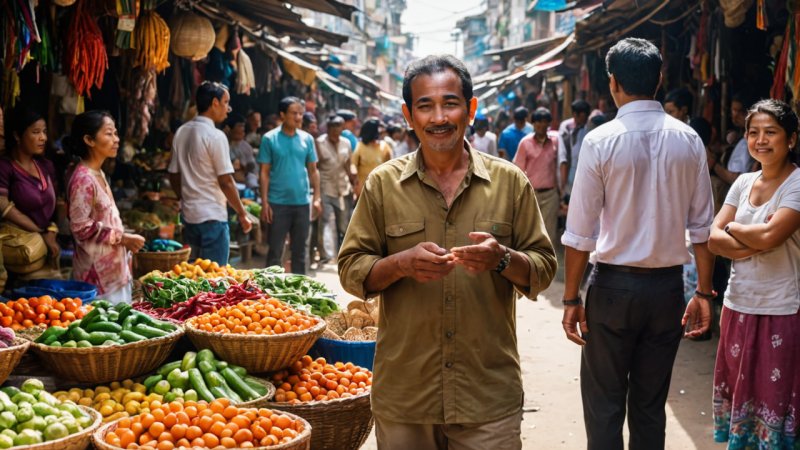Traveling alone can be one of the most liberating experiences, allowing you to explore the world on your own terms. However, as a solo traveler, it’s essential to be aware of the cultural norms and etiquettes of the places you visit. Understanding these practices not only enhances your travel experience but also fosters respect and connection with local communities. Whether you're sipping tea in Morocco, attending a festival in Japan, or dining in a café in Italy, navigating cultural etiquette can significantly impact your interactions and overall journey. In this guide, we will delve into practical tips and insights that will help you embrace the cultural nuances of your destinations, ensuring a rewarding solo travel experience.
Understanding Local Customs
Every country has its own set of customs and practices that dictate social interactions. Before you embark on your adventure, take some time to research the cultural norms of your destination. This includes greetings, gestures, and personal space preferences. For instance, in many Asian cultures, bowing is a common form of greeting, whereas in Western countries, a handshake may be more appropriate. Understanding these nuances will help you avoid unintentional faux pas and allow you to engage more meaningfully with locals.
Greetings and Introductions
When you meet someone for the first time, the way you greet them can set the tone for your relationship. In some cultures, such as in the Middle East, it’s customary to greet with a kiss on the cheek, while in others, such as in the United States, a firm handshake may be preferred. Pay attention to local customs regarding eye contact as well; in some cultures, direct eye contact is seen as confident, while in others, it may be viewed as disrespectful. Always be open to adapting your approach based on cues from your host.
Dining Etiquette
Food is a key part of cultural identity, and dining etiquette can vary significantly from one country to another. In some countries, like Japan, it is considered rude to stick chopsticks upright in a bowl of rice, while in others, it may be perfectly acceptable. When dining out, observe the behavior of locals and follow suit. If you're invited to someone's home, it’s polite to bring a small gift, such as flowers or sweets, as a token of appreciation.
Table Manners
Table manners also differ widely; for example, in Italy, it is frowned upon to ask for modifications to your meal, while in the United States, customization is often welcomed. In many cultures, finishing everything on your plate signifies that you enjoyed the meal, while in others, leaving a little food may indicate you are satisfied. Familiarize yourself with these customs to avoid misunderstandings during your dining experiences.
Dress Codes and Personal Presentation
Your attire can communicate a lot about your respect for local culture. Researching dress codes in advance can help you fit in and avoid drawing unnecessary attention. In many Middle Eastern countries, modest clothing is expected, while in some European nations, casual wear may be frowned upon in finer dining establishments. When visiting religious sites, be prepared to cover your shoulders and knees, as many places have specific dress requirements. Remember that how you present yourself can be a reflection of your regard for the culture you’re engaging with.
Photography Etiquette
Taking photos while traveling is a great way to capture memories, but not all cultures are comfortable with photography, especially of people or sacred sites. Always ask for permission before photographing individuals, particularly in rural or indigenous communities. In some locations, such as temples or churches, photography may be prohibited altogether, so look for signs or inquire with a local guide. Respecting these boundaries is crucial to maintaining a positive rapport with the community.
Language and Communication
Language barriers can pose challenges for solo travelers, but making an effort to learn a few basic phrases in the local language can go a long way. Simple greetings, thank you, and apologies can break the ice and show respect for the culture. If you find yourself in a situation where language differences become muddled, use body language and facial expressions to communicate. Remember, patience is key; locals appreciate your attempts even if your pronunciation isn’t perfect.
Handling Conflicts and Misunderstandings
Despite your best efforts, misunderstandings can occur. If you find yourself in a situation where you’ve unintentionally offended someone, a sincere apology can go a long way. Be open to learning from these experiences and approach them with humility. It’s important to remember that traveling solo means navigating unfamiliar situations, and each challenge can be an opportunity for personal growth and cultural exchange.
Embracing Local Traditions
Participating in local traditions and festivals can enrich your travel experience tremendously. Whether it's joining a dance in a vibrant street festival or attending a local ceremony, these experiences provide a deeper understanding of the culture. However, be sure to approach these events with respect and an open heart. Observe before participating, and be mindful of the significance of the traditions you are experiencing.
Conclusion
Traveling as a solo adventurer offers a unique opportunity to immerse yourself in new cultures, but it requires a keen awareness of local etiquettes and customs. By understanding the nuances of greetings, dining practices, dress codes, and communication styles, you can navigate your travels with respect and confidence. Embrace the joys of cultural exchange and be willing to learn from each encounter. Your journey will not only be enriching for you, but it will also foster goodwill and understanding in the communities you visit, making your travels all the more meaningful.






